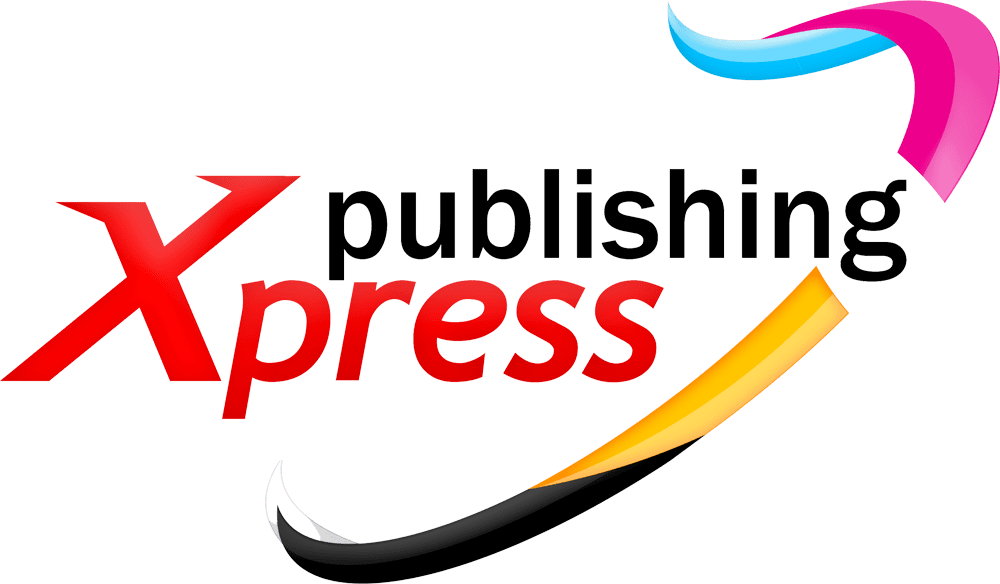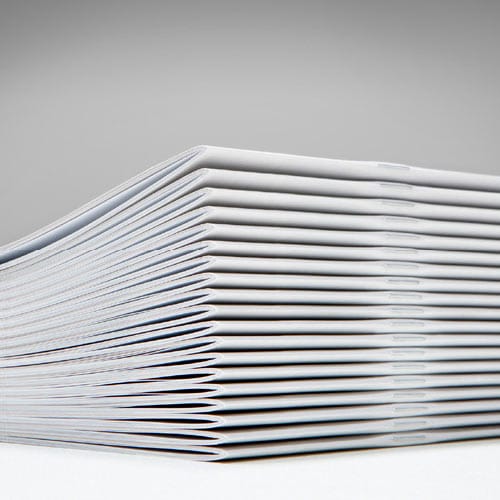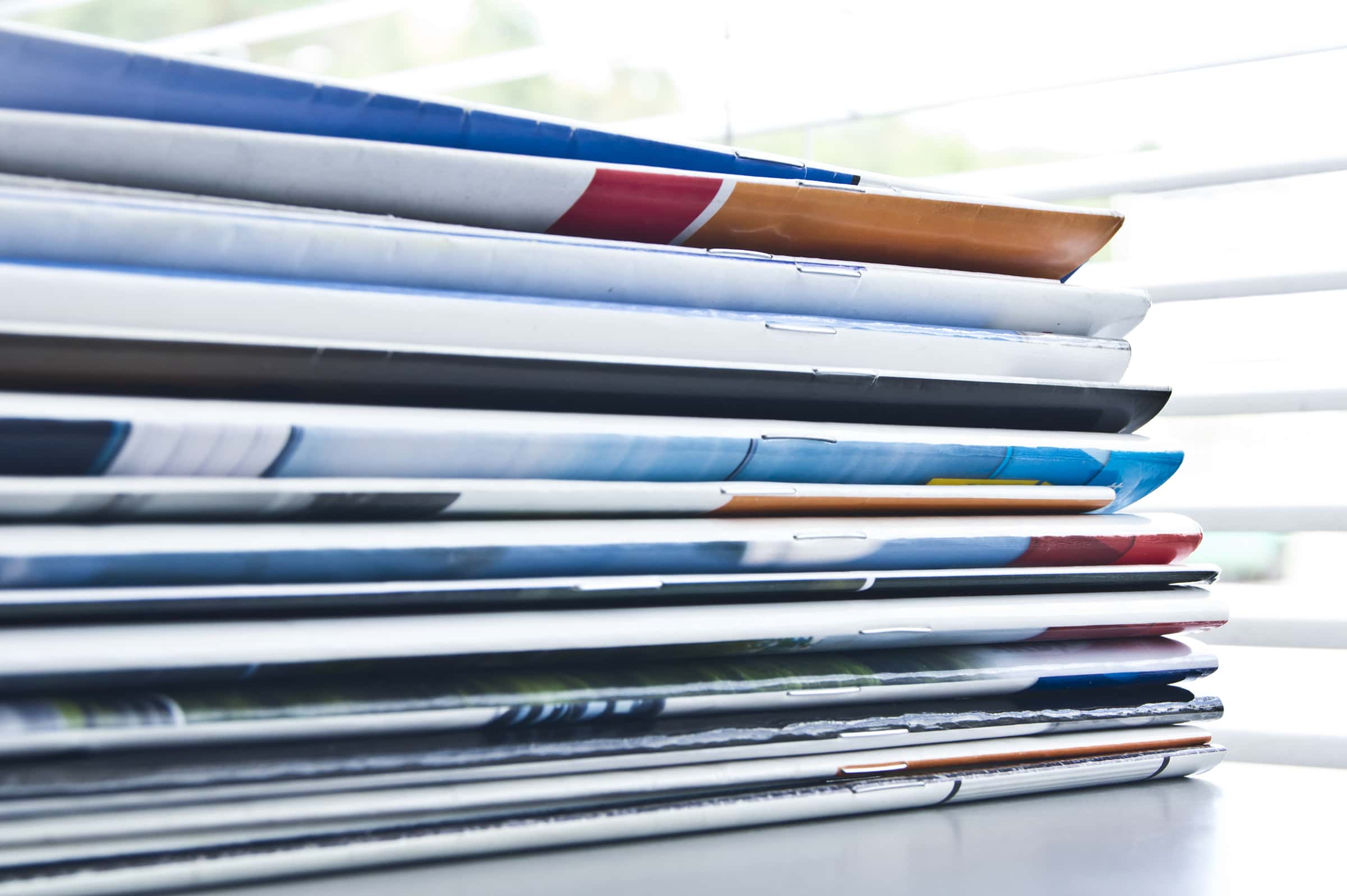Info
At Publishing Xpress, we specialize in printing multipage documents from 8 pages to over 600 pages for a wide range of clients, including companies, individuals, nonprofit organizations, and schools. We print a large assortment of products, including books, catalogs, art books, annual reports, association directories, calendars, children’s books, church directories, college journals, college textbooks, yearbooks, comic books, convention workbooks, cookbooks, family history books, journals, magazines, literary magazines, manuals, membership directors, memory books, newsletters, motivational books, novels, photo books, poetry books, product manuals, program booklets, seminar workbooks, souvenir books, special event fundraising booklets, team sports books, training manuals, and workbooks.
Please check out our Book Printing Ideas page for more information. With our numerous options, including three standard finished sizes and any number of custom sizes, four binding styles, many paper choices, UV coating on covers, fast turnaround, and low printing prices, we hope you’ll consider Publishing Xpress for your next printing project.
Top Tips for Effective Saddle Stitch Printing
Saddle stitch printing is a popular binding technique where folded sheets are stapled together along the spine. It’s a cost-effective and professional option for many types of printed materials like booklets and magazines. This article will cover everything you need to know about saddle stitch printing, from its benefits to its various applications.
Key Takeaways
- Saddle stitch printing is an affordable, efficient binding method ideal for various projects like booklets and brochures.
- Key components include the front and back covers, inside pages, and understanding dimensions and page count, which must be multiples of four.
- Publishing Xpress offers a customer-friendly service with a low minimum order, quick production times, and a satisfaction guarantee for quality assurance.
What Is Saddle Stitch Printing?
Saddle stitch printing is a popular binding technique where folded sheets are gathered together and stapled through their fold line, typically using wire staples. The method derives its name from the way sheets are draped over a saddle-like apparatus during the binding process. This approach is widely favored for its simplicity, efficiency, and the professional look it imparts to finished products.
Common applications of saddle stitching include booklets, programs, calendars, newsletters, pamphlets, and even comic books. The process involves folding each sheet in half, which means a standard sheet size of 11 x 17 inches will yield four pages when folded. Typically, saddle-stitched booklets range from a minimum of 8 pages to a maximum of 80 pages, although this can vary depending on the size and thickness of the paper.
Saddle stitch booklets are versatile, making them ideal for various projects such as corporate brochures, school yearbooks, or colorful magazines. This binding method offers both effectiveness and visual appeal.
Benefits of Saddle Stitch Binding
Saddle stitch binding stands out for its affordability. Compared to other methods like case or coil binding, it’s often more cost-effective, making it perfect for large-scale projects with budget constraints.
Saddle stitch binding is not only budget-friendly but also yields a professional look, ideal for high-quality publications like magazines. It preserves the overall aesthetics by avoiding visible holes, unlike some other binding types.
Saddle stitching is eco-friendly, using minimal materials like paper and wire staples. It’s highly versatile, accommodating various production runs with little setup. Whether for small batches of newsletters or large runs of booklets, it offers both flexibility and efficiency.
Key Components of Saddle Stitched Booklets
Saddle stitched booklets are practical due to their straightforward and effective structure. Key components include the front cover, back cover, and inside pages. Each part is crucial for the booklet’s look and functionality. Designing with a reader’s spread visualizes the intended page order, while a printer’s spread arranges pages for printing and folding.
Understanding these components is key to creating a cohesive and appealing product. Here’s a breakdown of each element and their contributions to the booklet’s success.
Front Cover and Back Cover
The front cover is the first thing readers see, making it crucial for capturing attention and communicating the booklet’s theme or message. An eye-catching cover significantly enhances the booklet’s appeal, attracting potential readers.
The back cover provides space for additional information, such as a summary or contact details, enhancing the booklet’s utility. A visually appealing front and back cover together significantly enhance the overall impression, making the booklet more engaging.
Inside Pages
For the inside pages, customers can choose between black-only or full-color printing, which greatly influences the booklet’s appearance and reader engagement. Quality control ensures uniform page sizes and proper staple placement.
Addressing issues like page misalignment or uneven trimming is crucial for maintaining high production standards. High-quality inside pages result in a professional and polished final product.
Self Cover vs. Separate Cover
A self-cover booklet uses the same paper for both the cover and inside pages, reducing production costs. This means the cover is usually less durable but more economical.
A plus-cover booklet uses a different, usually thicker stock for the cover, offering greater durability and a more premium feel. This option enhances the booklet’s look and feel, making it more attractive for high-end publications.
Page Count and Dimensions
Saddle stitched booklets have a unique page count range from 8 to 80 pages. Practically, most booklets contain about 64 pages or fewer to maintain a neat appearance.
Standard sizes include 5.5 x 8.5 inches, 6 x 9 inches, 8.5 x 11 inches, and 9 x 12 inches. The page count must be a multiple of four to avoid unplanned blank pages and ensure proper binding.
The Saddle Stitching Process
Saddle stitching combines simplicity and precision. It binds collated sheets using a wire spool pierced through the pages, creating a durable stitch. This method securely attaches pages along the spine, making it a favored choice for booklets and magazines.
A key aspect of this process is that the total page count must be divisible by four to ensure proper binding. Most booklets use a multiple of four pages to maintain consistent formatting.
Folding and Binding
In saddle binding, large sheets are typically folded in half, creating multiple pages in one fold. During folding, cardstock covers are creased along the spine to reduce cracking. Staples are inserted along the spine to secure the folded sheets that are bound together.
This method ensures the booklet remains intact and pages are properly aligned, resulting in a professional and polished product.
Adjusting Margins and Bleed
Proper margin settings are crucial to avoid cutting off text or images during printing. Margins should be wide enough to keep text and images clear of the trimming edge for a professional finish.
Adjusting the bleed area prevents unprinted edges after trimming. Bleed margins should extend beyond the page’s edge, ensuring colors and images reach the very edge.
Adjustments in margins and bleed are essential for a polished look, especially for designs extending to the page edges.
Quality Control
Quality control in saddle stitch printing ensures every printed booklet meets the expected standard. Publishing Xpress offers a 100% satisfaction guarantee, letting customers return products for reprints or refunds if unsatisfied.
This guarantee encourages manufacturers to uphold high production standards, ensuring customers receive beautiful and functional products.
Design Tips for Saddle Stitch Booklets
The design of a saddle stitched booklet is crucial, influencing first impressions and reader engagement. A well-designed front and back cover significantly enhances the booklet’s appeal and professionalism.
A well-designed saddle stitched booklet attracts attention with vibrant colors and quality paper. Proper alignment during folding and binding is essential for a neat appearance.
Creating Effective Artwork
Effective artwork is crucial for your booklet’s success. It should be visually engaging and aligned with the content to enhance overall appeal.
A double spread at the center ensures color consistency and alignment after printing. A separate cover made from different paper stock offers greater design flexibility, enhancing the booklet’s overall look.
File Submission Guidelines
For file submissions, PDF is the preferred format for compatibility with printing processes. Files should be exported as Adobe PDF (Print) to ensure proper formatting for saddle stitch printing.
Adobe InDesign is popular for designing saddle stitch booklets due to its layout capabilities and ability to export print-ready PDFs. Ensure the file format is set to ‘Adobe PDF (Print)’ when exporting your design for print.
Ordering and Printing with Publishing Xpress
Publishing Xpress offers various services for ordering and printing saddle stitched booklets. With a minimum order of just 25 copies, it’s easier to order smaller quantities without compromising quality.
Saddle stitching keeps shipping costs low due to its lightweight nature. Additionally, Publishing Xpress offers a customer-friendly ordering process and a satisfaction guarantee for a positive experience.
Minimum Print Quantity
Publishing Xpress requires a minimum order of 25 copies. This low quantity makes it accessible for various projects, regardless of scale.
Production Time and Shipping
Production typically takes four to six business days after proof approval. Free UPS ground shipping is offered for orders exceeding $399.
This free shipping policy contrasts with other companies that often charge significant fees.
Customer Satisfaction Guarantee
Publishing Xpress offers a 100% satisfaction guarantee. If dissatisfied, customers can return their order for reprints or refunds, depending on conditions. This commitment encourages customer confidence.
Additional Resources
For those interested in saddle stitch printing, additional resources can greatly enhance your understanding and quality. Publishing Xpress offers a free book titled ‘The Ultimate Guide to Printing Your Book, Booklet, Catalog, or Magazine’. Free sample packages are also available, including binding styles and various paper stocks to help visualize options.
Leveraging these free resources can significantly benefit those looking to create professional-quality saddle stitched materials. Here’s a detailed look at these resources.
Free Guide to Printing
Publishing Xpress offers a free book titled ‘The Ultimate Guide to Printing Your Book, Booklet, Catalog, or Magazine’. This guide provides valuable insights and tips for navigating the printing process and achieving high-quality results.
Sample Packages
Free sample packages from Publishing Xpress include various binding styles and paper stocks. These samples allow customers to evaluate options before making a decision, ensuring the best materials for their project.
Summary
In summary, saddle stitch printing is a versatile and cost-effective binding method ideal for various publications, from booklets and newsletters to magazines and catalogs. Its simple yet professional look, combined with minimal material use, makes it an attractive option for many printing projects. Understanding the key components—from the front and back covers to the inside pages—helps in designing a cohesive and engaging booklet.
The process of saddle stitching involves precise folding, binding, and attention to details like margins and bleed to ensure a polished final product. Employing quality control measures and leveraging design tips can significantly enhance the appeal and functionality of your saddle stitched booklets. With the additional resources provided by Publishing Xpress, including a free printing guide and sample packages, you have everything you need to produce high-quality, professionally bound publications.
Frequently Asked Questions
What is the minimum print quantity for saddle stitch printing at Publishing Xpress?
You’ve got to print at least 25 copies for saddle stitch printing at Publishing Xpress. So, just keep that in mind when planning your project!
What guarantee does Publishing Xpress offer for customer satisfaction?
Publishing Xpress has your back with a 100% satisfaction guarantee, so if you’re not happy with your order, you can get a reprint or a full refund. No stress!
What types of products does Publishing Xpress print?
Publishing Xpress prints a bunch of products like books, catalogs, and magazines. So, whatever your project is, they’ve got you covered!
What free resource does Publishing Xpress provide to help clients with printing?
Publishing Xpress offers a free book called “The Ultimate Guide to Printing Your Book, Booklet, Catalog, or Magazine” to help you with your printing needs. It’s a solid resource to get you started!
How can customers receive a sample of the binding styles and paper stocks?
You can easily get a free sample package that includes various binding styles and paper stocks by simply requesting it. It’s a great way to check out your options!







